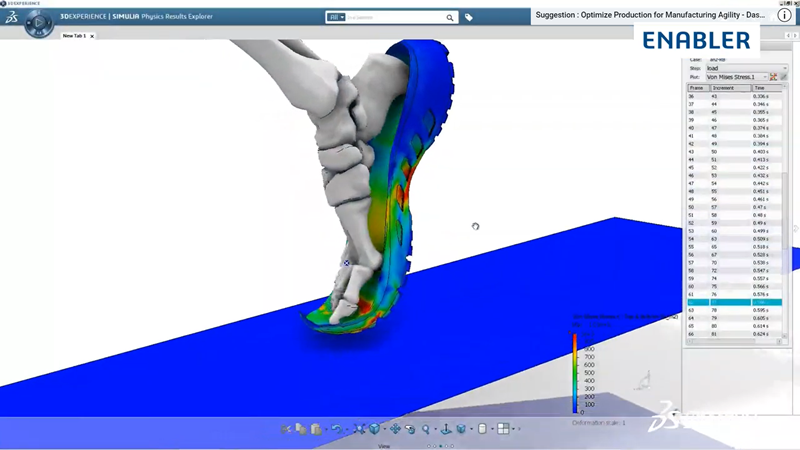
Imagine creating a product and testing out every single feature and nuance in numerous conditions and scenarios and correcting any errors and design flaws before you’ve even built the first physical prototype. Just think of the time and money you could save.
By moving much of the prototyping process into the virtual domain, Home & Lifestyle manufacturers can wave goodbye to waste, white elephants and faulty designs that never get off the drawing board. This is the promise of 3D simulation. And it’s why many of our customers are turning to our 3D simulation software SIMULIA to dramatically transform their product development strategies for the better.
So when they want to design and redesign their products, they use Product Structural Performance Optimization based on SIMULIA to make structures stronger, more efficient to make and less costly to produce.
Here is how they do it.
Simplify and strengthen
Design and engineering teams simulate all parts and components in the current model, looking for areas that could be improved upon, such as geometry, material thickness and maintenance access.
After studying the structure in 3D and simulating different versions, the team determine how they can make some effective design changes by removing/adding parts and changing components.
Virtual field tests, which incorporate real-world strain-gauge data into the 3D models, are carried out to improve the accuracy of simulations and truly represent the kind of loads that the product would encounter when used by the consumer. Engineers are then able to tweak their designs to reduce the amount of strain and lengthen fatigue life. In some scenarios, they could even expect to reduce the number of parts required.

Save time and cut costs
At the end of the redesign process, some products could end up with 50% fewer parts and therefore cost less to manufacture than their predecessor did.
But teams manage to save significant cost in through simulation. One of the major cost and time savings they realize is by cutting down on the number of physical prototypes they needed to make.
Prior to using simulation software, engineering teams can spend much more time and money on field-testing. They may, for example, build a machine and run it until it breaks, then build another one and run that one until it breaks and so on. However, by running the majority of tests in a virtual environment, our customers can simulate hours upon hours of testing in a fraction of the time, helping them to work more efficiently and cost effectively. And by the time they go to run a physical test of a finished redesign, they are confident that it is going to work.
Make simulation work for your Home & Lifestyle business
Using 3D simulation and visualization tools, available either on premise or in the cloud, many Home & Lifestyle companies are completely rethinking the way they design and redesign complex products. By turning to virtual simulation, they are able to refine their products and cut down on parts and manufacturing costs while still ensuring the highest quality end result. In the process, they reduce the number of physical prototypes they need to make and remove time-consuming and expensive manufacturing steps along the way. Done right and they can ensure that every new product iteration costs less to manufacture than its predecessor.
Discover how Home & Lifestyle manufacturers transform product development using the 3DEXPERIENCE platform to simulate and model products. Click here for more details.

